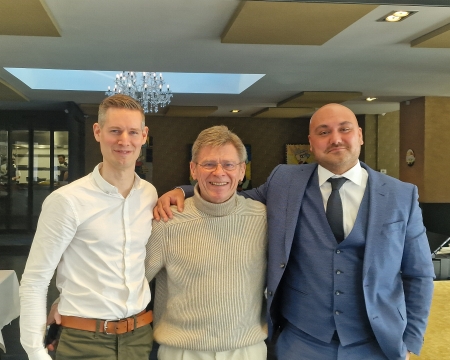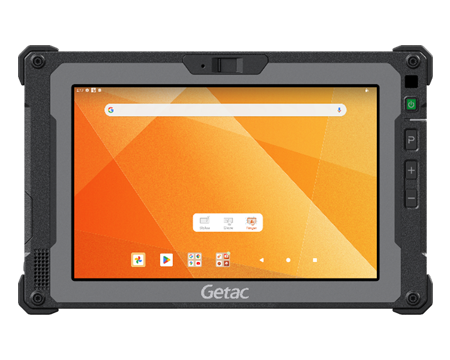RFID with a pinch
HOW INNOVATIVE A PUBLIC TENDER PROJECT CAN BE
During the industrial electronics industry’s Auto ID event in early March, Jan Rients Slippens of Rijkswaterstaat told an interesting story about the use of RFID for gritting on Dutch motorways. As a discussion with Slippens and product manager Geertjan Hendriks of supplier Microtron shows, this is not just a great technical and organisational story, but also a shining example of how a small electronics company can win a competitive tender and still be delighted to have done so after the implementation of the project.
Publication; Description, Text; Kees Groeneveld, Photography; Rijkswaterstaat
This is a story of industrial PCs, RFID tags on trucks and gritting boxes, digital readout units, a ‘passport system’ and a gritting management system. ‘Most people don’t see much of what we do,’ says senior gritting adviser Slippens (what’s in a name? – ed). ‘We do preventive gritting at night between three and five o’clock. If a decision is made to grit, it must be done within two hours. We don’t do this ourselves: we hire trucks for the purpose which pick up the gritters from our locations. The contracts with the subcontractors are based on what is actually done and there are penalties for exceeding the two hours. That’s one of the reasons why we have the RFID system.’ If it snows, 1,200 people get into action.
The system is used to monitor who is gritting where. The software analyses how much grit is spread and how widely it is scattered. ‘We already had a supplier for the management system, DMI. We went to the market for the tags on the trucks and spreaders and the readout systems at the support points.’ ‘We simply won the tender on price,’ reveals Geertjan Hendriks in his characteristic Brabant accent. ‘The savings for Rijkswaterstaat lay mainly in the tag and the readout module. To show that it works, we created a proof of concept. Microtron is a relatively small hardware supplier of off-the-shelf products, but we also supply custom-made products. For the middleware with which we communicate with the DMI system, we have the Belgian developer Auxcis as our partner.’
But how did things work out between such a large semi-governmental organisation and a small technology company? ‘Initially we weren’t that pleased about having to put this out to tender,’ Slippens admits. ‘In retrospect, we are very happy with the partnership with DMI and Microtron. The government encourages us to tender to small businesses. In fact, though, we simply didn’t notice that Microtron is a small company. We did want a test and a proof of concept before we made the contract definite. That was no problem for Microtron.’ Microtron’s take on this is as follows: ‘We’re used to doing projects, but this was a big and unique project for us. But “I can’t” often really means “I don’t want to”,’ he asserts, quoting an expression in Brabant dialect to this effect. ‘If something doesn’t work, just go back and take another look at it, if necessary with the developer.’
‘RIJKSWATERSTAAT GOES OUT ON A LIMB’
Hendriks for his part is also very positive about the collaboration with Rijkswaterstaat. ‘They proved to be willing to go out on a limb.’ ‘The technology opened our eyes. Although we saw the solution first and only started to look at the product afterwards.’ According to Slippens, RWS has reason to pursue its quest further. For the provision of data, they want to completely dispense with the temperature and ice sensors that sit in the road surface with wiring that gets frozen solid. Obtaining readings via RFID could be beneficial for this too. ‘This is still a challenge, with all the dirt and obstacles on and around the road.’
Customized advice?
Our employees are happy to help you

